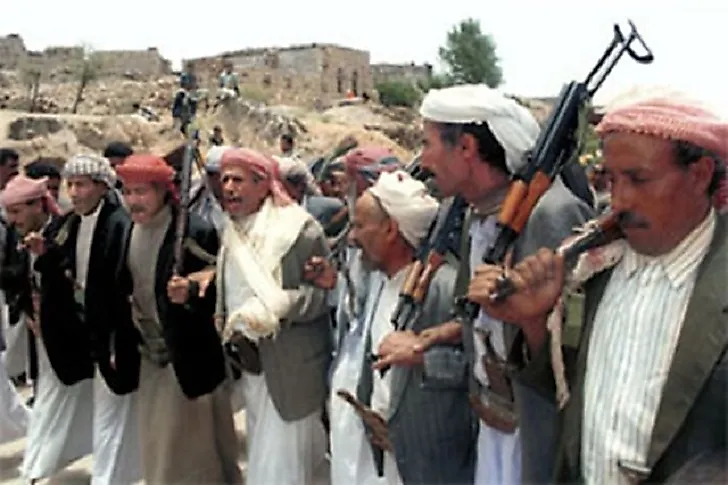Yemen's Tribes And Tribal Confederations

Yemen is a tribal society made up of several tribal confederations and even more tribes. These form a central part of contemporary Yemeni society. These tribes and confederations can be traced back to the ancient days. Some of these tribes, though distinct, can trace their origin to a common ancestor where the children and grandchildren form tribes and sub-tribes. Some of these tribes have garnered influence over the political, social, and economic aspects of the country. The most influential tribal confederations are Bakil and Hashid which are mainly in the Northern part of the country and exercise some level of control over Southern Yemen.
Bakil
The Bakil is the most populous and second most influential tribal confederation in Yemen, mainly occupying the area north of Sana’a. The Bakils defended their position for millennia during which an Imam from the tribe ruled Yemen. The Bakils converted to Islam in 622 BC. Being from the cooler parts of the country, they mainly dress in dark clothing for warmth. The Bakils are a semi-nomadic tribe with reduced movement. Therefore, they are isolated with many internal disputes over land, trees, and harvest. Their culture is heavily influenced by Islamic practices.
Hashid
The Hashid is the second most populous and the most influential confederation in Yemen. The Hadhid group occupies the mountains in the northern and northwestern regions of the country. Like the Bakil, the Hashid are a tribe descended from one of the sons of Jashim bin Jubran. The tribe converted to Islam at the same time as the Bakil, and their cultural practices are similar to those of the Bakil. Though Bakil and Hashid claim a common descent from Hamdam, the two confederations are in perpetual competition for power.
Bonu Harith
The Bonu Harith is a sub-tribe of the Kahlani tribe, which in turn is a faction of the Qahtanite people. The tribe practiced Judaism during the pre-Islamic era and worked as goldsmiths and in the repair of arms. They were a powerful house until the Christian invasion which forced them to move, and they lost their power. Persecution during the Islamic era led to some of the Hariths fleeing to Sana’a and Aden. Many contemporary Bonu Hariths currently reside in Israel, where they are also known as Yemenite Jews.
Humaydah
The Humaydah tribe is a sub-tribe of the Bariq people. The tribe was a powerful house in Bareq city until the Ibn Saud invasion. The Humaydah tribe practice Islam and speak Arabic, and are mainly nomads occupying the Bareq and Al-Majardah regions. Conflicts are mostly internal with divisions among their villages. The tribe has been described as peaceful and pleasure-loving hardly engaging in wars.
Other Yemeni Tribes and Inter-Tribal Relations
Yemen’s other tribes include the Banu Judham, who practice Islam and are said to be either of the Kahlani or Himyarite tribe, as well as the Banu Lakhm of the Qahtan people, the Kahlan, the Madh’hij of the Qahtanite people, the Maqil who are a nomadic Arabic tribe, the Nukha who are a sub-branch of the Madh’hij, the Quahtanite, the Sabeans, and the Banu Hamdan who are a sub-tribe of the Hashid peoples. Although these tribes and tribal confederations have a strong attachment to their traditions, they are still subject to external influences from interactions with other communities through trade wars and intermarriages. These tribes at a national level have conflicts of power and though there have been attempts to change this, the country remains under tribal influence especially from the two major confederations.











